Water Desalination & RO
Membrane Technology for Water Treatment
Views : 6
Usually dispatched in 2 to 3 days
Usually dispatched in 2 to 3 days
Category:
Water Desalination & RO
Only logged in customers who have purchased this product may leave a review.
Related books
Tailoring Advanced Desalination Technologies for 21st Century Agriculture
Abstract: Substantial parts of the U.S., particularly drier landlocked regions, are facing acute water shortages and water quality issues that decrease agricultural productivity. Reduced crop yields cause billions of dollars in losses annually, affecting the livelihoods of thousands. A combination of population growth, inefficient agricultural practices, and resource demanding consumption trends is only expected to increase pressure on our water supplies. This research proposal seeks to address water and food security issues by cost-effectively and energy-efficiently enhancing water quality and water supply in greenhouses; a $22.93 billion dollar industry in 2017 that is rapidly growing at an annual rate of 8.92%. Greenhouses widely practice desalination of salty irrigation water to improve their operations. However, currently used desalination methods do not tailor greenhouse waters based on crop requirements. This work investigates a fully integrated desalination solution that treats and tailors brackish source waters ingreenhouses to save fertilizer and water. Specifically, this project experimentally studies multi-ion transport in and assesses the economic viable of monovalent selective electrodialysis (MSED). MSED allows for the selective removal of monovalent ions damaging to crops and the retention of divalent ions beneficial for crops, unlike the widely used reverse osmosis (RO), which removes all ions from greenhouse source water. First, we evaluate the techno-economic feasibility of MSED compared to other brackish desalination technologies for agricultural applications, based on primary market research we conduct with over 70 greenhouses.
These include conventional technologies, such as reverse osmosis (RO) and electrodialysis (ED), and advanced technologies, such as closed circuit reverse osmosis (CCRO). The analysis determines the levelized costs of water, the capital costs and energy requirements of these technologies, and how these vary with feed salinity, system capacity and recovery ratio. Then, we build a bench-scale setup to experientially characterize MSED membrane properties, including monovalent selectivity, ion transport, limiting current and resistance, for multiple brackish feedwaters and for two sets of MSED membranes: the widely used Neosepta ACS/CMS membranes and the new Fujifilm Type 16 membranes. Both MSED membranes show notable monovalent selectivity for all tested compositions, reflecting the potential of the technology for selective desalination in greenhouses. The measurements are compared to a model for MSED in multi-ion solutions. The model predicts multi-ion transport for the Neosepta and Fujifilm MSED systems within 6% and 8%, respectively.
Tailoring Advanced Desalination Technologies for 21st Century Agriculture
Abstract: Substantial parts of the U.S., particularly drier landlocked regions, are facing acute water shortages and water quality issues that decrease agricultural productivity. Reduced crop yields cause billions of dollars in losses annually, affecting the livelihoods of thousands. A combination of population growth, inefficient agricultural practices, and resource demanding consumption trends is only expected to increase pressure on our water supplies. This research proposal seeks to address water and food security issues by cost-effectively and energy-efficiently enhancing water quality and water supply in greenhouses; a $22.93 billion dollar industry in 2017 that is rapidly growing at an annual rate of 8.92%. Greenhouses widely practice desalination of salty irrigation water to improve their operations. However, currently used desalination methods do not tailor greenhouse waters based on crop requirements. This work investigates a fully integrated desalination solution that treats and tailors brackish source waters ingreenhouses to save fertilizer and water. Specifically, this project experimentally studies multi-ion transport in and assesses the economic viable of monovalent selective electrodialysis (MSED). MSED allows for the selective removal of monovalent ions damaging to crops and the retention of divalent ions beneficial for crops, unlike the widely used reverse osmosis (RO), which removes all ions from greenhouse source water. First, we evaluate the techno-economic feasibility of MSED compared to other brackish desalination technologies for agricultural applications, based on primary market research we conduct with over 70 greenhouses.
These include conventional technologies, such as reverse osmosis (RO) and electrodialysis (ED), and advanced technologies, such as closed circuit reverse osmosis (CCRO). The analysis determines the levelized costs of water, the capital costs and energy requirements of these technologies, and how these vary with feed salinity, system capacity and recovery ratio. Then, we build a bench-scale setup to experientially characterize MSED membrane properties, including monovalent selectivity, ion transport, limiting current and resistance, for multiple brackish feedwaters and for two sets of MSED membranes: the widely used Neosepta ACS/CMS membranes and the new Fujifilm Type 16 membranes. Both MSED membranes show notable monovalent selectivity for all tested compositions, reflecting the potential of the technology for selective desalination in greenhouses. The measurements are compared to a model for MSED in multi-ion solutions. The model predicts multi-ion transport for the Neosepta and Fujifilm MSED systems within 6% and 8%, respectively.
Cleaning Procedures for Composite Polyamide RO Membrane Elements
Note: The Composite Polyamide type of RO membrane elements may not be
exposed to chlorinated water under any circumstances. Any such exposure may
cause irreparable damage to the membrane. Absolute care must be taken
following any disinfection of piping or equipment or the preparation of cleaning or
storage solutions to ensure that no trace of chlorine is present in the feedwater to
the RO membrane elements. If there is any doubt about the presence of chlorine,
perform chemical testing. Neutralize any chlorine residual with a sodium bisulfite
solution, and ensure adequate mixing and contact time to accomplish complete
dechlorination. Dosing rate is 1.8 to 3.0 ppm sodium bisulfite per 1.0 ppm of free
chlorine
Cleaning Procedures for Composite Polyamide RO Membrane Elements
Note: The Composite Polyamide type of RO membrane elements may not be
exposed to chlorinated water under any circumstances. Any such exposure may
cause irreparable damage to the membrane. Absolute care must be taken
following any disinfection of piping or equipment or the preparation of cleaning or
storage solutions to ensure that no trace of chlorine is present in the feedwater to
the RO membrane elements. If there is any doubt about the presence of chlorine,
perform chemical testing. Neutralize any chlorine residual with a sodium bisulfite
solution, and ensure adequate mixing and contact time to accomplish complete
dechlorination. Dosing rate is 1.8 to 3.0 ppm sodium bisulfite per 1.0 ppm of free
chlorine
Desalination For Safe Water Supply
Preface:
Access to sufficient quantities of safe water for drinking and domestic uses and also for commercial and industrial applications is critical to health and well being, and the opportunity to achieve human and economic development. People in many areas of the world have historically suffered from inadequate access to safe water. Some must walk long distances just to obtain sufficient water to sustain life. As a result they have had to endure health consequences and have not had the opportunity to develop their resources and capabilities to achieve major improvements in their well being. With growth of world population the availability of the limited quantities of fresh water decreases. Desalination technologies were introduced about 50 years ago at and were able to expand access to water, but at high cost. Developments of new and improved technologies have now significantly broadened the opportunities to access major quantities of safe water in many parts of the world. Costs are still significant but there has been a reducing cost trend, and the option is much more widely available. When the alternative is no water or inadequate water greater cost may be endurable in many circumstances.
Desalination For Safe Water Supply
Preface:
Access to sufficient quantities of safe water for drinking and domestic uses and also for commercial and industrial applications is critical to health and well being, and the opportunity to achieve human and economic development. People in many areas of the world have historically suffered from inadequate access to safe water. Some must walk long distances just to obtain sufficient water to sustain life. As a result they have had to endure health consequences and have not had the opportunity to develop their resources and capabilities to achieve major improvements in their well being. With growth of world population the availability of the limited quantities of fresh water decreases. Desalination technologies were introduced about 50 years ago at and were able to expand access to water, but at high cost. Developments of new and improved technologies have now significantly broadened the opportunities to access major quantities of safe water in many parts of the world. Costs are still significant but there has been a reducing cost trend, and the option is much more widely available. When the alternative is no water or inadequate water greater cost may be endurable in many circumstances.
Database Of Permitting Practices For Seawater Desalination Concentrate
Abstract:
The purpose of this research project was to identify the discharge information that permitting agencies need and the decision-making process they go through to permit discharge methods in order to help desalination project proponents focus and expedite their permitting efforts.
The project documented seawater reverse osmosis (SWRO) discharge regulatory issues and provided a critical overview of facility discharge-related information required for permitting desalination projects in the United States and selected countries with advanced environmental regulations and experience in implementing seawater desalination projects. Information was gathered from the three key U.S. states (California, Florida, Texas) where interest in SWRO desalination has been highest. Due to the more extensive international experience with SWRO desalination, information was also obtained from the countries of Australia, Israel, and Spain – all countries of significant recent large-scale SWRO desalination projects. Case studies of 11 SWRO plants and analysis of regulatory systems and permitting processes supported detailed definition of the decision-making process to set discharge permit limits, as well as defining environmental and other regulatory issues associated with concentrate regulation.
Database Of Permitting Practices For Seawater Desalination Concentrate
Abstract:
The purpose of this research project was to identify the discharge information that permitting agencies need and the decision-making process they go through to permit discharge methods in order to help desalination project proponents focus and expedite their permitting efforts.
The project documented seawater reverse osmosis (SWRO) discharge regulatory issues and provided a critical overview of facility discharge-related information required for permitting desalination projects in the United States and selected countries with advanced environmental regulations and experience in implementing seawater desalination projects. Information was gathered from the three key U.S. states (California, Florida, Texas) where interest in SWRO desalination has been highest. Due to the more extensive international experience with SWRO desalination, information was also obtained from the countries of Australia, Israel, and Spain – all countries of significant recent large-scale SWRO desalination projects. Case studies of 11 SWRO plants and analysis of regulatory systems and permitting processes supported detailed definition of the decision-making process to set discharge permit limits, as well as defining environmental and other regulatory issues associated with concentrate regulation.
Desalination At A Glance
Introduction:
By desalination, we will be referring to the production of a useful product water from a feed
water that is too high in inorganic materials (salts) to be useful. The feed water may be
seawater, brackish water, or other “impaired” water that cannot be used directly for potable
or general industrial purposes. Notice that this definition includes the treatment of certain
wastewaters for subsequent reuse.
The principal technologies used in desalination are based on concepts that are fairly easy to
grasp by those with a modest amount of scientific training and/or technical experience. In
practice, however, choices of technology and plant design are usually determined by factors
that might appear minor to the inexperienced. Similarly, new technologies that show great
promise in the laboratory frequently fail for reasons that were earlier overlooked or dismissed
as trivial. Indeed, professional fascination with specific technical elegance has, in some
cases, led researchers to remain oblivious to inherent limitations of a process. Nonetheless,
attention to detail over the past five decades has resulted in dramatic reductions in capital
and operating costs as well as greatly increased plant reliability and performance
Desalination At A Glance
Introduction:
By desalination, we will be referring to the production of a useful product water from a feed
water that is too high in inorganic materials (salts) to be useful. The feed water may be
seawater, brackish water, or other “impaired” water that cannot be used directly for potable
or general industrial purposes. Notice that this definition includes the treatment of certain
wastewaters for subsequent reuse.
The principal technologies used in desalination are based on concepts that are fairly easy to
grasp by those with a modest amount of scientific training and/or technical experience. In
practice, however, choices of technology and plant design are usually determined by factors
that might appear minor to the inexperienced. Similarly, new technologies that show great
promise in the laboratory frequently fail for reasons that were earlier overlooked or dismissed
as trivial. Indeed, professional fascination with specific technical elegance has, in some
cases, led researchers to remain oblivious to inherent limitations of a process. Nonetheless,
attention to detail over the past five decades has resulted in dramatic reductions in capital
and operating costs as well as greatly increased plant reliability and performance
Chemical Cleaning Effects On Properties And Separation Efciency Of An RO Membrane
Abstract: This study aims to investigate the impacts of chemical cleaning on the performance of a reverse osmosis
membrane. Chemicals used for simulating membrane cleaning include a surfactant (sodium dodecyl sulfate, SDS), a
chelating agent (ethylenediaminetetraacetic acid, EDTA), and two proprietary cleaning formulations namely MC3
and MC11. The impact of sequential exposure to multiple membrane cleaning solutions was also examined. Water
permeability and the rejection of boron and sodium were investigated under various water fluxes, temperatures and
feedwater pH. Changes in the membrane performance were systematically explained based on the changes in the
charge density, hydrophobicity and chemical structure of the membrane surface. The experimental results show that
membrane cleaning can significantly alter the hydrophobicity and water permeability of the membrane; however, its
impacts on the rejections of boron and sodium are marginal. Although the presence of surfactant or chelating agent
may cause decreases in the rejection, solution pH is the key factor responsible for the loss of membrane separation
and changes in the surface properties. The impact of solution pH on the water permeability can be reversed by
applying a subsequent cleaning with the opposite pH condition. Nevertheless, the impacts of solution pH on boron
and sodium rejections are irreversible in most cases
Chemical Cleaning Effects On Properties And Separation Efciency Of An RO Membrane
Abstract: This study aims to investigate the impacts of chemical cleaning on the performance of a reverse osmosis
membrane. Chemicals used for simulating membrane cleaning include a surfactant (sodium dodecyl sulfate, SDS), a
chelating agent (ethylenediaminetetraacetic acid, EDTA), and two proprietary cleaning formulations namely MC3
and MC11. The impact of sequential exposure to multiple membrane cleaning solutions was also examined. Water
permeability and the rejection of boron and sodium were investigated under various water fluxes, temperatures and
feedwater pH. Changes in the membrane performance were systematically explained based on the changes in the
charge density, hydrophobicity and chemical structure of the membrane surface. The experimental results show that
membrane cleaning can significantly alter the hydrophobicity and water permeability of the membrane; however, its
impacts on the rejections of boron and sodium are marginal. Although the presence of surfactant or chelating agent
may cause decreases in the rejection, solution pH is the key factor responsible for the loss of membrane separation
and changes in the surface properties. The impact of solution pH on the water permeability can be reversed by
applying a subsequent cleaning with the opposite pH condition. Nevertheless, the impacts of solution pH on boron
and sodium rejections are irreversible in most cases

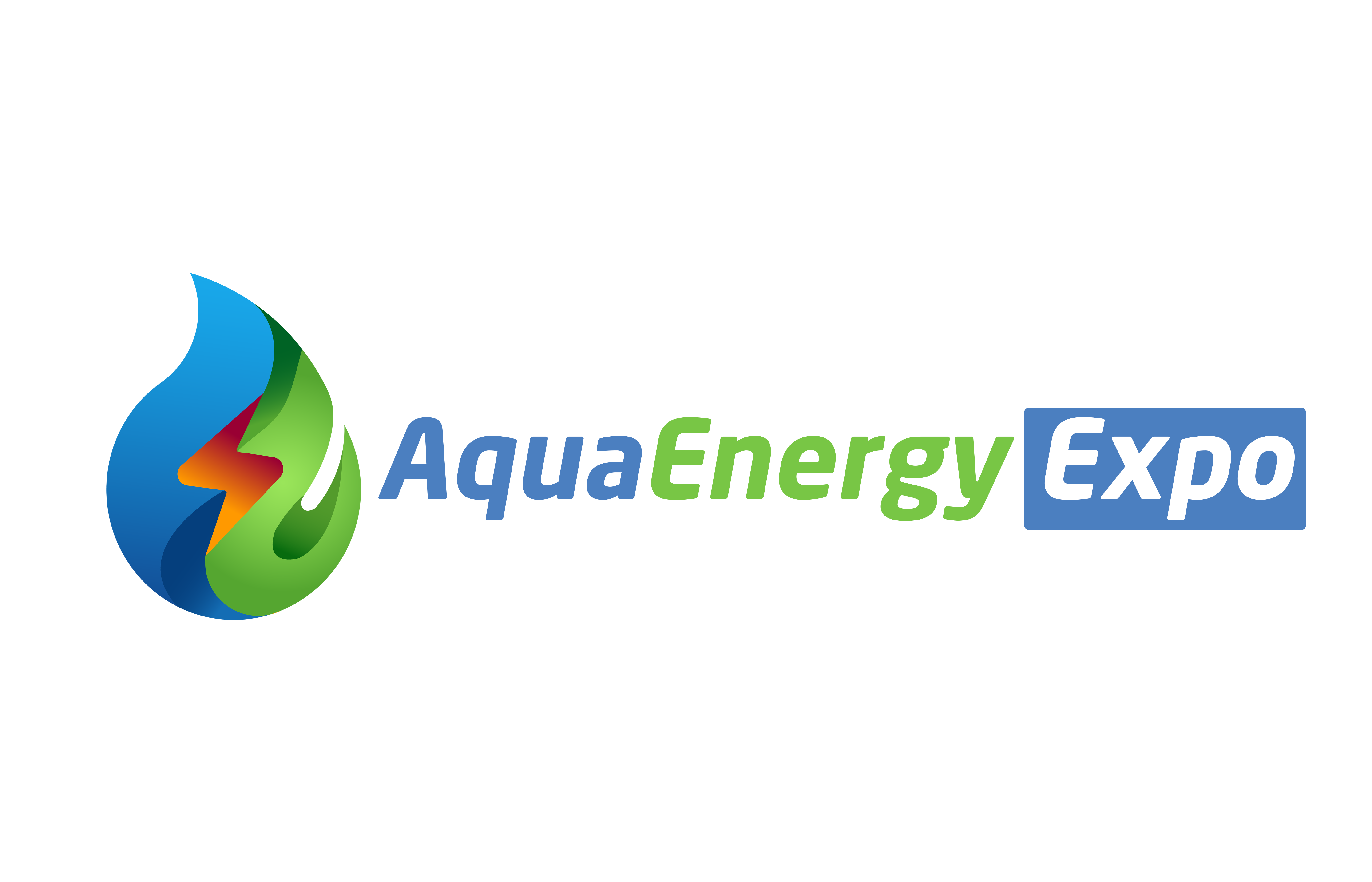
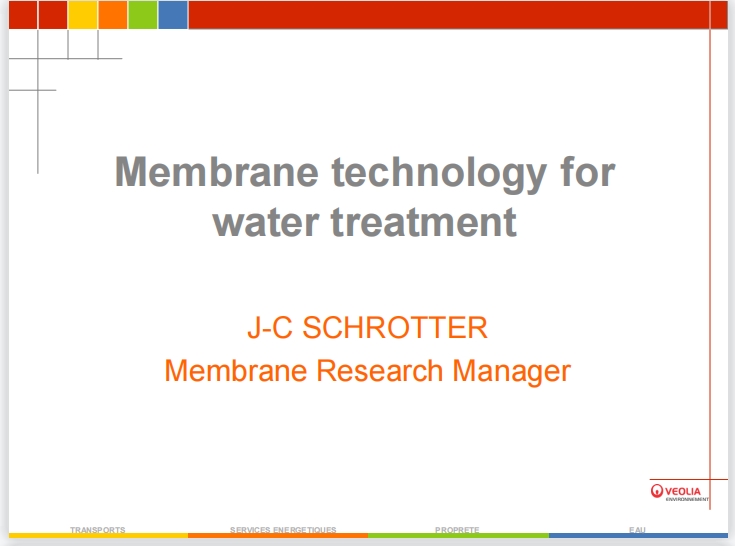

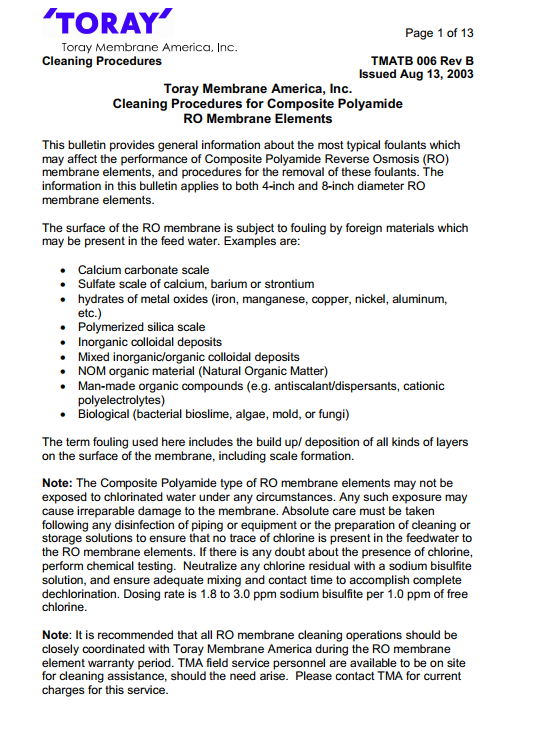


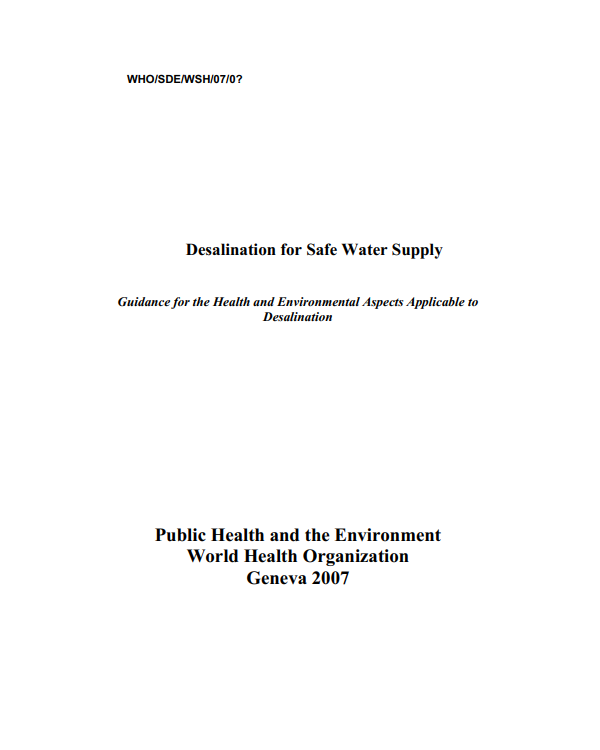
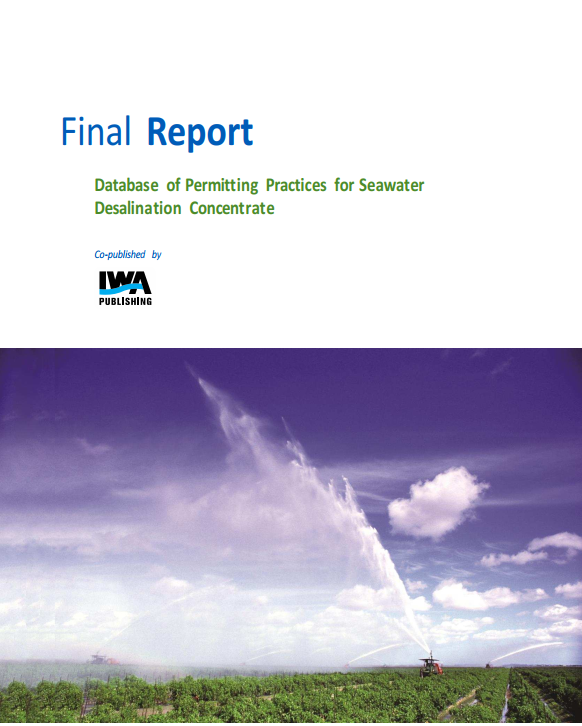
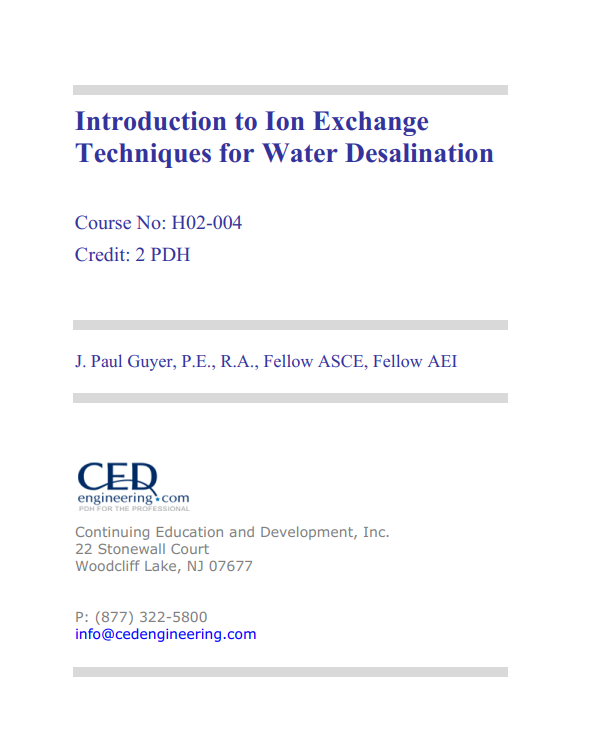

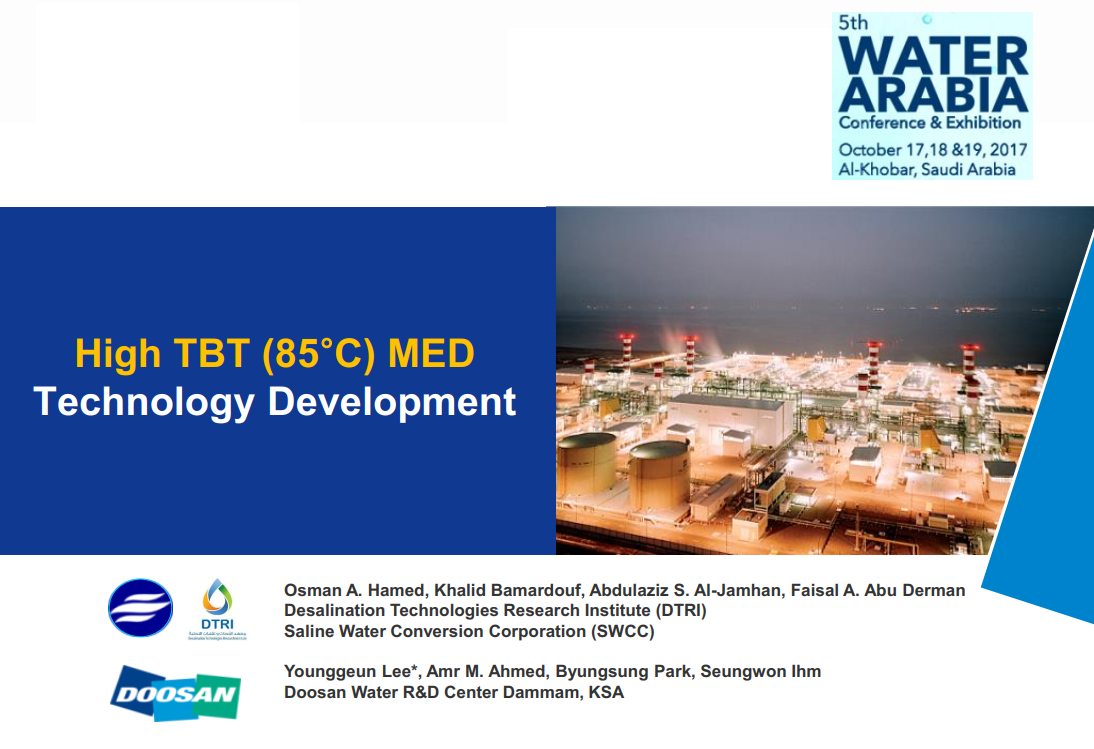
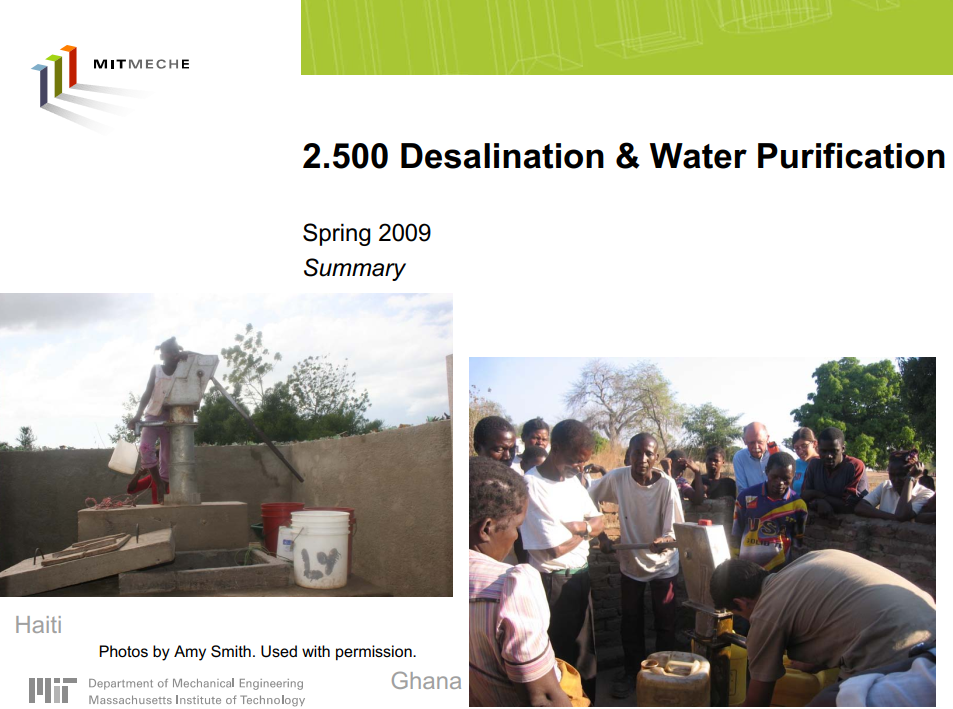
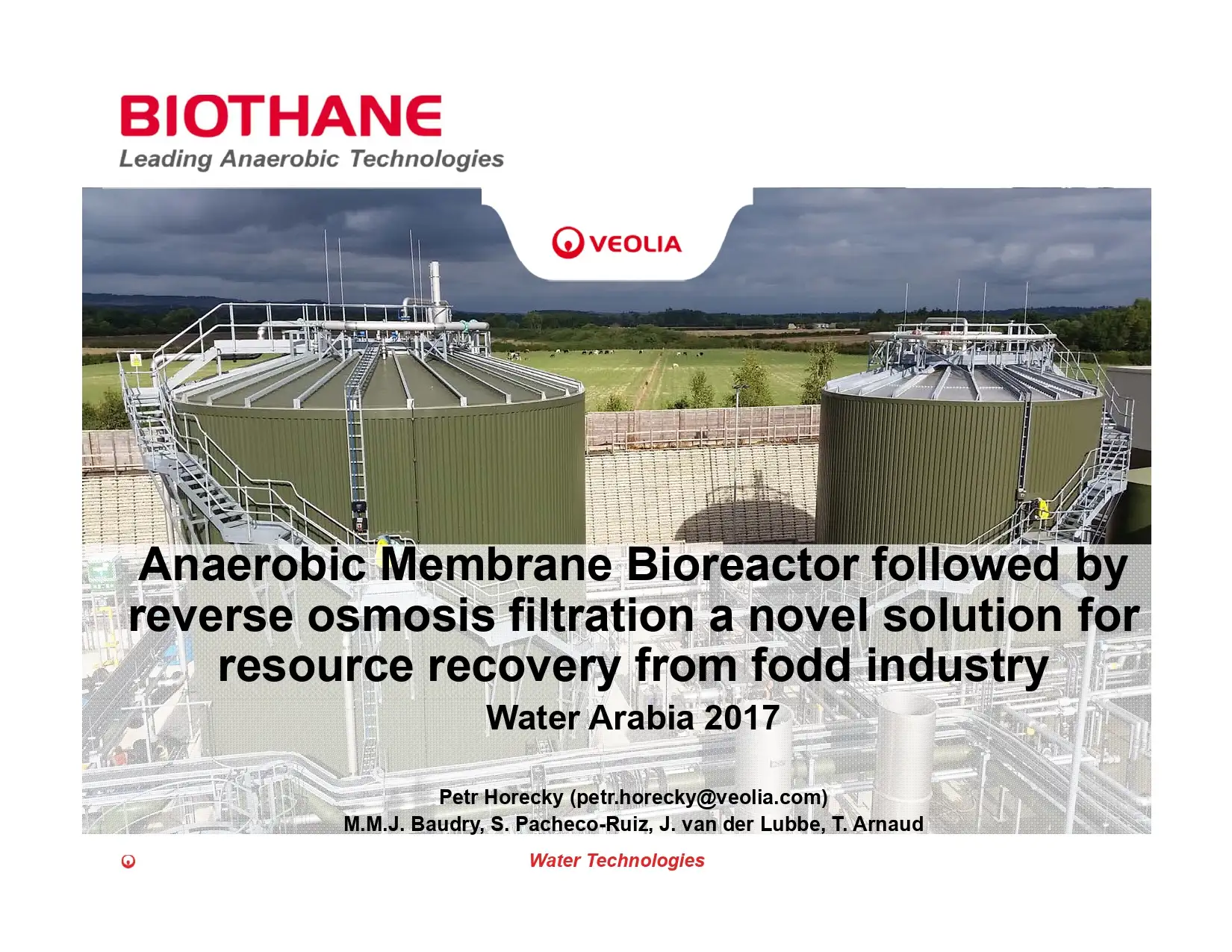
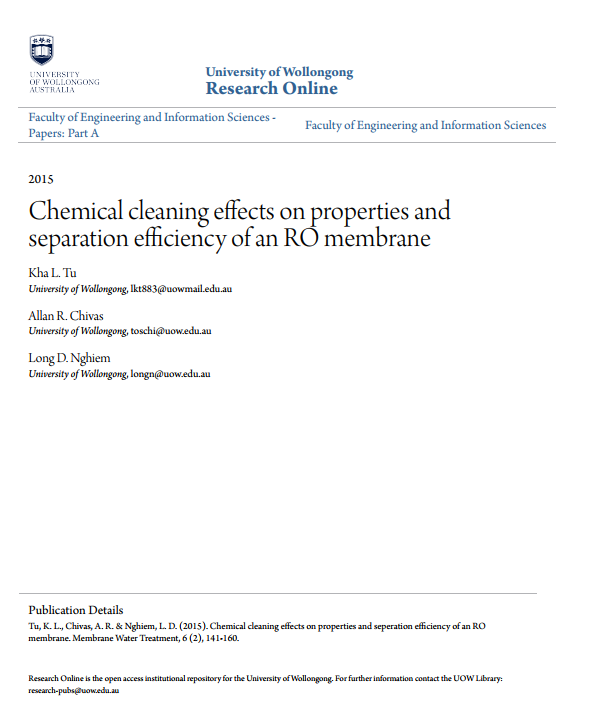
Reviews
There are no reviews yet.